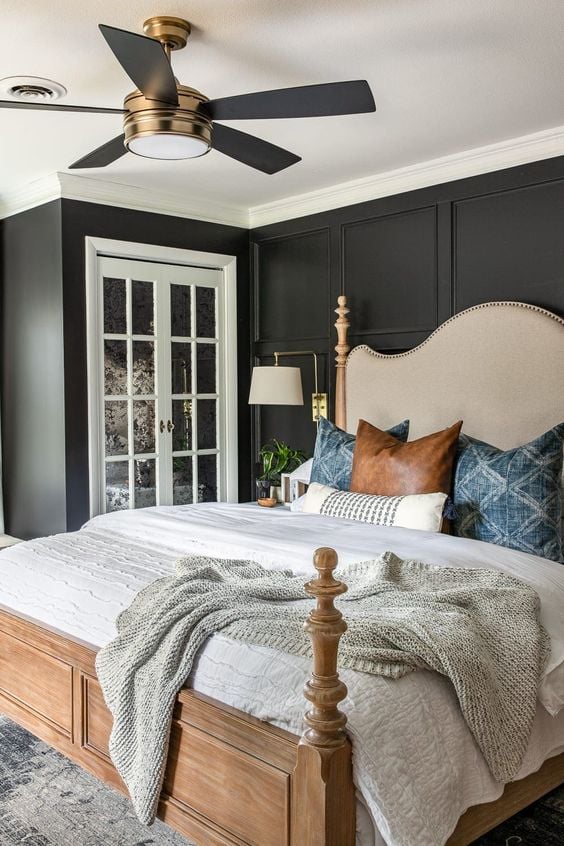Discover the essential guide to buying a ceiling fan. Learn how to choose the perfect fan based on room size, ceiling height, design, features, efficiency and more. Make your home comfortable and stylish with the right ceiling fan.
Disclaimer: this post may contain affiliate links, and every purchase made through these links will give me a small commission (at absolutely no extra cost for you!) AS AN AMAZON ASSOCIATE AND REWARDSTYLE MEMBER, I EARN FROM QUALIFYING PURCHASES. See Privacy Policy for additional info.
When it comes to maintaining a comfortable climate in your home, ceiling fans are a classic, cost-efficient solution. Not only do they provide a cooling effect during warmer seasons, but they can also help distribute warm air during colder months, making them a versatile feature in any household. However, before you dash off to make a purchase, there are several factors you need to consider to ensure you choose the right ceiling fan for your space.
Understanding Basics Before Buying a Ceiling Fan
Size Matters: One of the first things you need to consider is the size of your room. A fan that's too small won't cool effectively, while one that's too large could be overpowering.
- Small Rooms (up to 75 square feet): Look for a fan with a blade span of 29 to 36 inches.
- Medium Rooms (76 to 144 square feet): Aim for a blade span of 36 to 42 inches.
- Large Rooms (145 to 225 square feet): Choose a fan with a blade span of 44 to 54 inches.
- Extra-Large Rooms (over 225 square feet): Go for fans that are 56 inches or larger.
Ceiling Height: This determines the type of mount you'll need – standard, extended, or flush:
- For ceilings 8 feet or shorter: Flush mount, also known as a "hugger" or "low profile" ceiling fan.
- For ceilings 9 feet or higher: Downrod mount, to bring the fan down to an 8-foot level.
- For sloped ceilings: You might need an angled mount or a special adapter.
Motor Quality: The motor is the heart of the fan. Look for high-quality motors with heavy-duty windings and sealed bearings that are permanently lubricated. Energy-Star certified fans with DC motors often offer better efficiency and have variable speeds.
Style and Features
Design Aesthetics: Ceiling fans come in a variety of styles to match any decor. From modern and sleek designs to traditional or rustic looks, ensure the fan complements your room's aesthetic.
Blade Material and Finish: Blades can be made of wood, plastic, or metal, and their finish should match the overall theme of the room. Some fans have reversible blades with different finishes on each side, allowing you to change the look without replacing the entire fan.
Lighting: Consider whether you want a ceiling fan with lights. Fans with integrated lighting can serve as a two-in-one fixture, while fans without lighting can give a cleaner look or allow for more flexible lighting options in the room.
Controls: Pull chains are common, but wall controls and remote controls offer added convenience, with some even offering smart home integration for voice control or automation.
Performance and Efficiency
Airflow Efficiency: Airflow is measured in cubic feet per minute (CFM). A higher CFM means more air movement, but compare CFM to the fan's energy consumption (in watts) to get a true measure of its efficiency.
Reversible Motor: Many fans come with a reversible motor that allows the fan to cool the room during summer and circulate warm air in the winter. Verify this feature if you live in an area with distinct seasons.
Energy Efficiency: Look out for Energy Star-rated fans, as they are often more efficient and save on operating costs. LED lighting options are also a consideration for both longevity and energy savings.
Installation and Maintenance
Professional Installation: If you're not confident about your electrical skills, hiring a professional is a wise decision. Proper installation ensures safety and performance efficiency.
Maintenance: Regular upkeep involves cleaning the blades and checking for any signs of wear and tear or loose components.
Buying a Ceiling Fan Conclusion
A ceiling fan is not only a statement piece but also an invaluable asset for maintaining comfort in your home. By taking into account the size, style, and features that align with your specific needs, you can make a smart and satisfying purchase. Remember to factor in performance and efficiency, as these will impact your long-term satisfaction and energy bills. And don't overlook the importance of proper installation and maintenance, as these can greatly extend the life and effectiveness of your new ceiling fan. Happy shopping!
Remember, the right ceiling fan can add charm to your room, make your space more comfortable, and even reduce energy costs - making it a cool investment in every sense of the word.
Until next time,















Leave a Reply